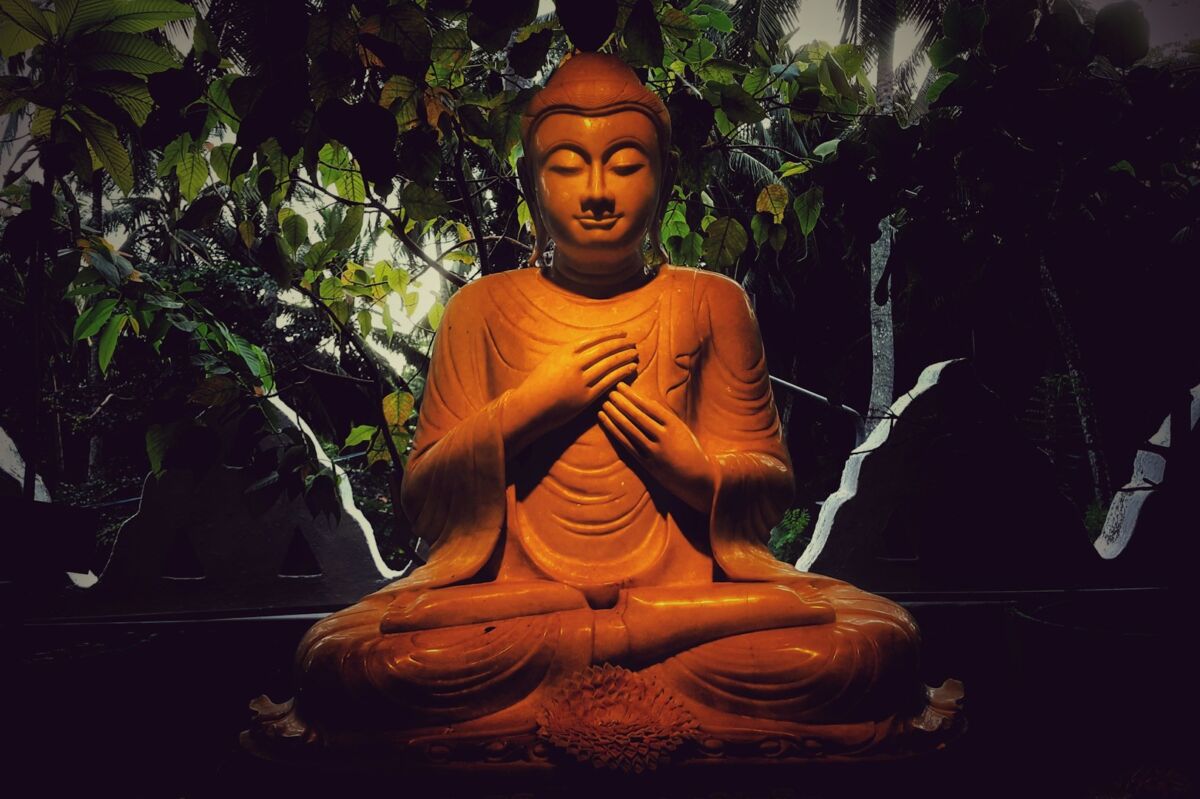“When writers call the Buddha a ‘spiritual democrat,’ they mean he felt sure he could go anywhere in India and find that needle in the haystack, the person who would come up after the sermon and say, ‘I want to know more about how to prevent hostile thoughts from arising. Please teach me,’” writes Eknath Easwaran (December 17, 1910–October 26, 1999) in his translation of The Dhammapada. “The serious student is what every teacher seeks, and the Buddha found enough of them in these crowds to build a movement that has had a powerful and enduring effect on people’s hearts and lives for centuries.”
It can be hard to study Buddhism with its numerous schools and variations of teachings. That is why a while back I wrote an article titled “What Is Theravada Buddhism?” where I list several reasons why it’s a good starting point for anyone who is at the beginning of their path. The Dhammapada is an important part of that school’s canonical collection of scriptures called the Pali Canon. You can think of it as an equivalent of a practical handbook with the core of the Buddha’s teachings condensed in poetry and arranged by theme: anger, greed, fear, happiness, thought, and so on.
The Dhammapada is ever more important because the Buddha didn’t leave us a static structure of doctrine but rather an ongoing roadmap that we can follow to develop inner calm and wisdom. It’s not a secret that a considerable part of the teachings was meant for monks, but The Dhammapada was meant for a wide audience and could be easily understood and practiced by lay followers. Eknath Easwaran — a prominent Indian scholar and spiritual teacher — puts it best when he writes that “if everything else were lost, we would need nothing more than The Dhammapada to follow the way of the Buddha.”

Join Mindful Spot Patreon Community
Hi, I've just launched a new Patreon page and invite you to become one of the founding members. Here's what you'll get when you join:
- Behind-the-scenes updates
- Access to exclusive articles
- Monthly Zoom meetings and discussions
Click the button below to become a member and support our mission.
Join Patreon
The Dhammapada’s method for transforming our minds can already be seen in its first chapter titled “Twin Verses.” It presents us with a pair of possibilities for human conduct, each leading to a different outcome. “If one who enjoys a lesser happiness beholds a greater one, let him leave aside the lesser to gain the greater,” said the Buddha and these verses illustrate the wisdom of these words:
1. Our life is shaped by our mind; we become what we think. Suffering follows an evil thought as the wheels of a cart follow the oxen that draw it.
2. Our life is shaped by our mind; we become what we think. Joy follows a pure thought like a shadow that never leaves.

Why it’s so hard for us to enjoy a lesser happiness in order to behold a greater one? The obstacle is always our mind. It’s our mental state that determines which choice we make. The mind wires us for the tendency to look out for our own interest, and its natural response to any situation is to take the easy way out, to go with the current.
3. “He was angry with me, he attacked me, he defeated me, he robbed me” — those who dwell on such thoughts will never be free from hatred.
4. “He was angry with me, he attacked me, he defeated me, he robbed me” — those who do not dwell on such thoughts will surely become free from hatred.

To find a way out, the Buddha teaches us, one has to go against the current, against every selfish impulse. We should refrain from taking the easy path traveled by the many. “In his experience of enlightenment, he had seen for himself that eternal principles operate in human affairs,” notes Eknath Easwaran while translating the Buddha’s timeless verses:
19. Those who recite many scriptures but fail to practice their teachings are like a cowherd counting another’s cows. They do not share in the joys of the spiritual life.
20. But those who know few scriptures yet practice their teachings, overcoming all lust, hatred, and delusion, live with a pure mind in the highest wisdom. They stand without external supports and share in the joys of the spiritual life.
Complement this particular portion of The Dhammapada with Ven. Bhikkhu Bodhi on liberating quality of limitations in Buddhism and then revisit our articles on the Four Noble Truths and the Noble Eightfold Path.
I’m a freelance writer and mindfulness advocate behind this blog. What you see here is the combination of my three favorite things: reading, writing, and mindfulness. While you’re here, subscribe to my blog updates and gain access to free mindfulness resources for stress relief.








